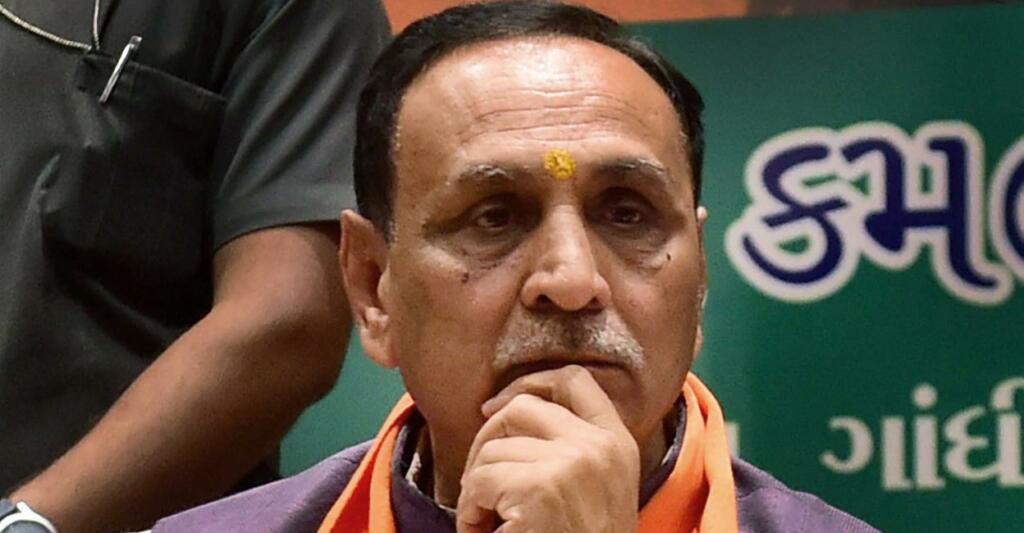Politics is a game of perceptions. You might be extremely efficient in performing your functions and discharging your duties, but if you don’t maintain a strong media presence, you aren’t likely to win crucial elections. For easy reference, let us call it the ‘Raghubar Das’ syndrome- if you aren’t visible, you will not win no matter how efficient you are. This is what also explains Gujarat CM Vijay Rupani’s surprise resignation, despite performing reasonably well as the Chief Minister.
The Raghubar Das ‘syndrome’:
Raghbur Das, the former Chief Minister of Jharkhand, is a leading example of what lack of media presence can do. Das’ appointment as Jharkhand CM was the best thing that happened to the state after its formation in the year 2000.
In fact, Raghubar Das became the first Chief Minister of Jharkhand to complete a full term in office. He introduced several bold reforms during his tenure as Jharkhand’s Chief Minister including the ‘Jharkhand Right to Fair Compensation and Transparency in Land Acquisition, Rehabilitation and Resettlement Rules-2015’, which was promulgated after taking into account the large number of tribal-dominated areas which come under 5th Schedule of the Constitution.
Under Das’ Chief Ministership, Jharkhand also became the first state in the Union of India to ban the Popular Front of India (PFI), without caring for baseless allegations of anti-minority policies.
The Raghubar Das government had also introduced an anti-conversion Bill, which was also passed by the Jharkhand state Assembly.
Das was bringing all political, social or economic reforms that needed to be introduced in Jharkhand. Yet, when the state went to elections in 2019, the BJP lost the polls. At the end of the day, it was realised that despite his bold reforms, Das didn’t enjoy a lot of political popularity or media presence.
The fact that Das couldn’t get a second consecutive term in power was a realisation of the fact that you may be very efficient in your job as an elected leader, but efficiency, competence and high-performance levels are no substitutes for media traction and charisma.
‘Stalwart’ Chief Ministers:
On one hand, you have someone like Raghubar Das who performed brilliantly and yet failed to win elections. And on the other hand, you have political leaders like Yogi Adityanath and Himanta Biswa Sarma. These leaders are doing equally well but they are in a different league because of the level of media presence, popularity, visibility and connection to grassroots workers that they maintain.
Leaders like Sarma and Yogi Adityanath have actually become political heavyweights because of their unparalleled charisma and popularity. In fact, it seems that Himanta became the Assam Chief Minister because of his towering popularity.
Even someone like Devendra Fadnavis, the former Chief Minister of Maharashtra, may have failed to secure a second term in power but he remains extremely popular within the state because of his high popularity levels.
Similarly, even opposition leaders like West Bengal CM Mamata Banerjee, Delhi CM Arvind Kejriwal or Kerala CM Pinarayi Vijayan may be at the centre of political controversy due to serious political differences with the Centre but they stay in power because of their charisma.
Prime Minister Modi- biggest example of charismatic personality:
When it comes to the role of charisma and popularity in elections and political campaigning, they need to look no further than Prime Minister Modi. No one beats PM Modi in terms of charisma within or outside the BJP.
For the last two decades, the left-liberal media has been running a smear campaign against him. However, when it comes to electing their political leader, the electorate often displays the ability to sift the grain from the chaff. Despite a hostile media campaign backed by vested interests, PM Modi has been able to ride on his charisma and popularity to win three consecutive terms as Gujarat CM followed by two consecutive terms as India’s Prime Minister till now.
‘Raghubar Das’ syndrome in the BJP:
Vijay Rupani is not the example of a BJP Chief Minister failing to continue in power, merely due to lack of media traction and general popularity. Trivendra Singh Rawat, who was also performing well as Uttarakhand Chief Minister, was reportedly replaced earlier this year after he grew unpopular among party leaders due to what was described as over-dependence on bureaucrats and inability to inspire confidence in the ruling party’s central leadership.
The fact remains that the office of the Chief Minister or any other political office does demand an extrovert personality. It cannot be worked out as an AM to PM job, because when the political leader isn’t very visible, local cadres tend to lose inspiration and confidence, which might further translate into bad electoral results despite flawless administrative performance.
Some of the incumbent BJP leaders like Haryana Chief Minister Manohar Lal Khattar and Himachal Pradesh Chief Minister Jairam Thakur haven’t been able to create the kind of persona that popular leaders like Yogi Adityanath and Himanta Biswa Sarma have created in their own states.
At the end of the day, BJP leaders must realise that as abominable as it may sound, elections cannot be won solely based on performance and the ability to make it to the newspaper headlines is a must for winning polls, especially at the state level.
